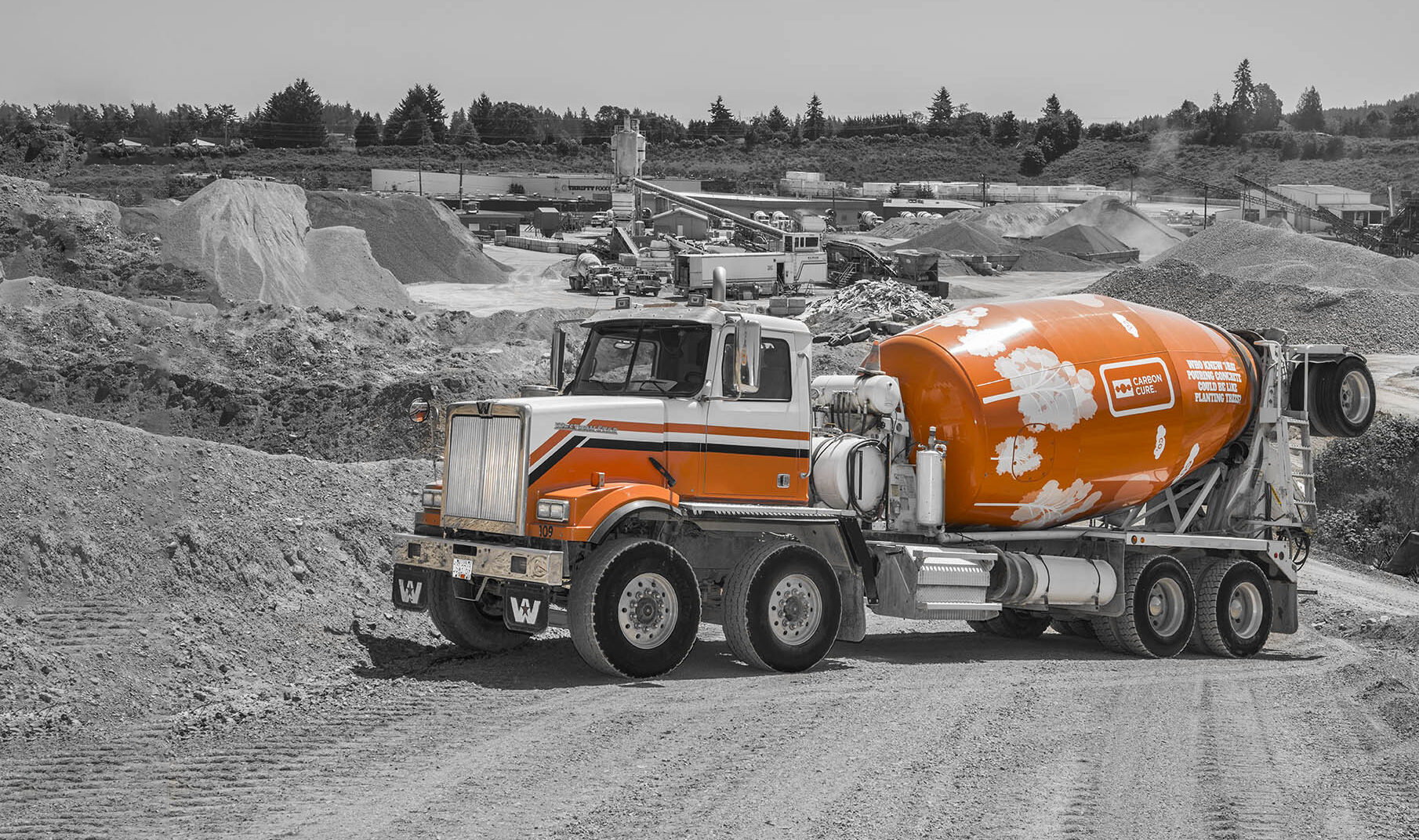
A new frontier in carbon removal is taking shape—literally
Concrete might not seem like a climate solution, but new innovations are flipping that script. Concrete carbon sequestration is gaining attention for its ability to trap carbon permanently within hardened structures. With global construction emissions under scrutiny, this breakthrough has the potential to change how the industry tackles sustainability.
How carbon sequestration in concrete actually works
At its core, the process uses a natural chemical reaction to lock away CO2. When carbon dioxide dissolves in water, it creates carbonic acid, which reacts with calcium ions from cement to form calcium carbonate. This reaction permanently stores the carbon in the solid structure.
This isn’t a hypothetical idea. Companies like CarbonCure Technologies are already offering equipment that injects captured CO2 into concrete during mixing. Once in, the carbon stays locked in for the lifetime of the structure.
>> RELATED: Transforming CO2 into Construction Materials: A Revolutionary Solution for Climate Change

Why it matters now more than ever
Concrete accounts for 8% of global CO2 emissions, mostly due to the cement production process. Every batch poured presents a new opportunity to remove carbon from the atmosphere. Incorporating carbon sequestration into concrete could be one of the most scalable climate solutions available.
Projects like the 725 Ponce development in Atlanta show what’s possible. By using a specialized mix from Thomas Concrete, builders removed 750 tonnes of CO2 from the atmosphere—the same amount 888 acres of forest would absorb in a year.
It doesn’t just cut emissions—it strengthens concrete too
Turns out, this approach doesn’t just make concrete greener, it makes it stronger. Studies have shown that carbon-injected concrete has higher compressive strength, thanks to a denser paste.
Hessam AzariJafari, deputy director of the MIT Concrete Sustainability Hub, notes that "this approach can increase the compressive strength of cement-based products by densifying the paste."
When cured at optimal or higher temperatures, carbon-sequestered concrete has shown better strength and faster carbonation than low-temperature mixes. For builders, that means a more durable, reliable end product.
A tech-driven shift that’s just getting started
Carbon sequestration in concrete is no longer experimental. Technologies like CarbonCure are already being installed at mixing plants across North America and beyond.
While not yet the industry standard, adoption is rising. Builders and suppliers are increasingly looking to reduce climate impact and comply with stricter ESG standards. Carbon sequestration offers a practical, immediate step toward that goal.

>> In Other News: Winners of Inaugural Atlantic Canada Cleantech Awards Showcase East Coast Excellence
It’s a solution that scales with construction
Unlike some carbon removal methods that are limited in scope, concrete carbon capture scales effortlessly. Construction is already a massive global industry—and every slab, column, or wall is a chance to lock away CO2.
With federal and private incentives, the economics are starting to make sense. Builders can future-proof their operations, enhance durability, and contribute to climate goals without reinventing their entire process.
The path ahead: challenges and momentum
There’s still work to be done. The industry needs wider access to carbon injection equipment and stronger policy support. Education on the benefits and science behind carbon-capturing concrete is also essential.
Still, the momentum is undeniable. More builders are asking suppliers about carbon-sequestering options, and more projects are proving its effectiveness. It’s no longer a matter of "if" but "when."
Final pour: a climate solution hiding in plain sight
Concrete carbon sequestration offers an exciting way to rethink an old material for a new climate era. By turning a major emissions source into a carbon sink, the industry has a chance to build a cleaner future—literally.
Whether driven by sustainability goals, performance benefits, or regulatory pressure, the shift is underway. And if done right, the construction sector might just become one of our strongest allies in the fight against climate change.
Subscribe to the newsletter
Daily decarbonization data and news delivered to your inbox
Follow the money flow of climate, technology, and energy investments to uncover new opportunities and jobs.
Latest issues
-
SAF Output Doubled, So Why Is IATA Sounding Alarms?
Happy New Year from Decarbonfuse! As we wrap up 2025, we want to thank you for being part of the growing Decarbonfuse community. Your engagement and feedback have helped make this platform a trust...
-
$213 Per Tonne: Inside the Latest Multi-Pathway CDR Deal
Inside This Issue 💸 $213 Per Tonne: Inside the Latest Multi-Pathway CDR Deal 🏛️ Clean Energy Technologies Affiliate Vermont Renewable Gas Advances Regulatory Review 💧 Fusion Fuel’s BrightHy Soluti...
-
The Three-Continent Move That Redefines SAF
Wishing everyone a restful holiday season.🎄🎅🎁 Inside this Issue ✈️ Cathay Goes Global With SAF in Three-Continent Fuel Deal 🧪 Proton Ventures Partners With Barents Blue For Realization Of The Bar...
Company Announcements
-
HyOrc Completes Factory Acceptance Test of 500kW ORC Turbine for International Customer
HOUSTON, Dec. 31, 2025 (GLOBE NEWSWIRE) -- HyOrc Corporation (OTCID: HYOR), a clean-energy technology company, today announced the successful completion of the Factory Acceptance Test (FAT) for its...
-
Nova Sustainable Fuels Receives Approval to Produce Sustainable Aviation Fuel in Guysborough County
Nova Sustainable Fuels has received environmental assessment approval for the first phase of a project that will see the company develop a renewable energy park in Goldboro, Guysborough County, whe...
-
Darling Ingredients Announces Sale of Approximately $50 Million in Production Tax Credits
IRVING, Texas -- Darling Ingredients Inc. (NYSE: DAR) today announced the sale of approximately $50 million of production tax credits to a corporate buyer. These credits were generated under the In...
-
Aemetis Receives Funds From the Sale of $17 Million of Federal Clean Energy Tax Credits
CUPERTINO, Calif., Dec. 30, 2025 (GLOBE NEWSWIRE) -- Aemetis, Inc. (NASDAQ: AMTX), a renewable natural gas and renewable liquid fuels company focused on lower cost and reduced emissions products, t...